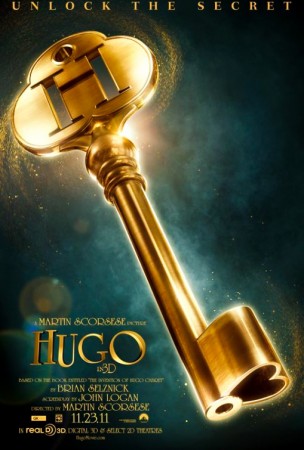
c/o c/o upcoming-movies.com
If you’ve ever wondered what a Martin Scorsese movie for kids would look like, “Hugo” may be your one and only chance to find out. The celebrated director, known more for his crime and violence-filled movies, like “The Departed,” “Gangs of New York,” and “Raging Bull,” here lends his directorial vision to the nostalgic, heartwarming tale of a young orphan with a penchant for fixing things that are broken.
First of all, “Hugo” is the prettiest movie you will see all year, and possibly ever in your lifetime. It is a visual triumph of 3-D filmmaking, a medium that has faced much criticism from snobby filmgoers. Although often misused to gain a quick buck, 3-D has its place in the film industry, just as Technicolor had its place before it, and “Hugo” is that place. One shot of the title character precariously hanging high over Paris provoked gasps from my height-wary companions. The ever-turning gears and omnipresent smoke provide a unique world for the film, effectively evoking Paris of the 1930s while lending an aura of mystery and fantasy. Instead of pushing out at you from the screen, the simultaneously dark and whimsical atmosphere draws you in and fully envelops you in the film’s universe.
As far as performances go, I didn’t find the acting to be the most enjoyable aspect of the film. Asa Butterfield, who plays the title character (and has just landed the lead role in the film adaptation of “Ender’s Game,” so watch out), is sufficiently brooding and awkward. Acting heavyweight Ben Kingsley does a serviceable job as a crabby man pining for his former glory. Chloe Grace Moretz, who already made a name for herself with her controversial starring role in “Kick Ass,” falls flat as Hugo’s starry-eyed, book-loving companion. The real stand-out here is Sasha Baren Cohen, in an uncharacteristically dramatic role, who imbues his devious station-inspector character with both the motivation and endearing awkwardness to justify his harsh treatment of Hugo and ultimate redemption.
For a film that uses the most expensive technology available, often put at the service of expansive world-building à la “Avatar,” “Hugo” feels strangely intimate. Nearly all the action of the film takes place within a Parisian train station, featuring the kooky cast of characters that inhabit it. Small moments between Cohen’s seemingly diabolical station inspector and the woman of his dreams provide him with a redeeming adorableness, and a budding romance between a dog-loving restaurant owner and her admirer leads to the sweetest moment of the entire film. Personally, I would have loved more exploration of the other characters within the train station and their daily routine, but a 127 minute run time is already quite long for a purported children’s movie.
Narratively, “Hugo” is far from what I expected. When I say it is a kids’ movie, that statement has more to do with the PG rating than the intended audience. “Hugo” is a film major’s dream movie. The plot eventually takes a turn for the super-nerdy, hinging mostly on a relatively obscure bit of film history going back practically to the invention of cinema, when George Méliès used tricks and illusions to explore the new possibilities of the moving-pictures medium. I got a huge kick out of it, but I’m quite sure this would go right over the heads of anyone under the age of 18 in the audience, and many over that age as well.
Despite this, the plot is somewhat slow moving. Scorsese takes his time carefully and painstakingly setting up his world and characters before delving into his cinematic nostalgia, and I wouldn’t be surprised if some child audience members, more used to the flashy colors and cheery songs of “The Muppets” variety, would be bored stiff.
Finally, some aspects of the world Scorsese creates are genuinely dark. This is a world in which self-sufficient orphans can be snatched up by dog-catcher-like police officers and hauled away to a surely horrific orphanage. One sudden burst of fire made me jump a bit in my seat. “Hugo” has its moments of cheesiness, but the overall atmosphere, while beautiful, is actually a little depressing.
Speaking of cheesiness, where the film succeeds in establishing itself as a holiday movie for the ages is in its heartwarming adoration for film history and culture. It’s odd that a film created using the most modern technologies evokes such an overwhelming sense of nostalgia for a time when special effects were created with elaborate sets and magic tricks, but Scorsese manages to combine the two into a beautiful exploration of where film has been and where it is going. A movie about an orphan in Paris could easily fall into the trap of schmaltzy sentimentality, but the unique plot components and darkly stunning visuals help keep “Hugo” in the realm of magical sweetness.